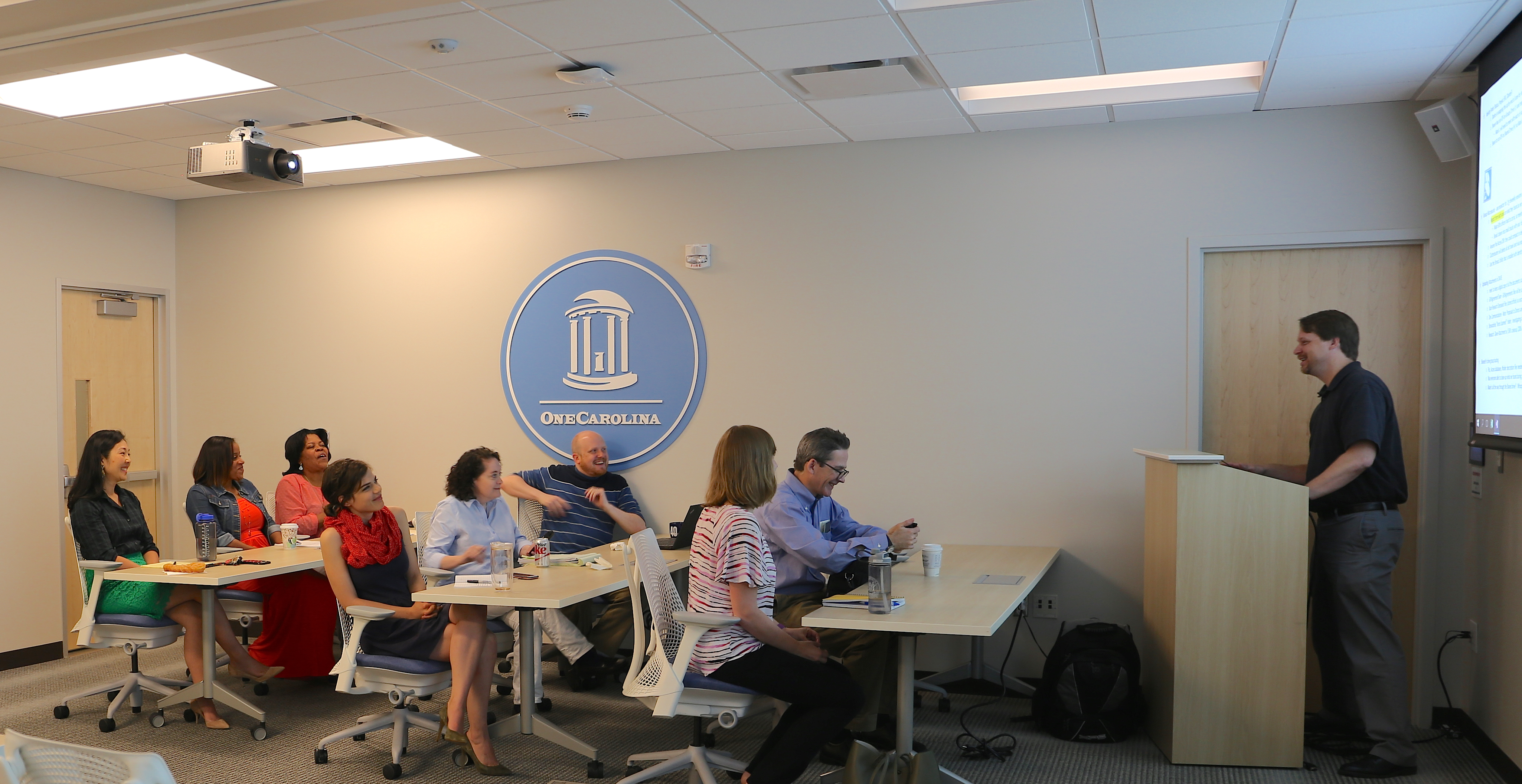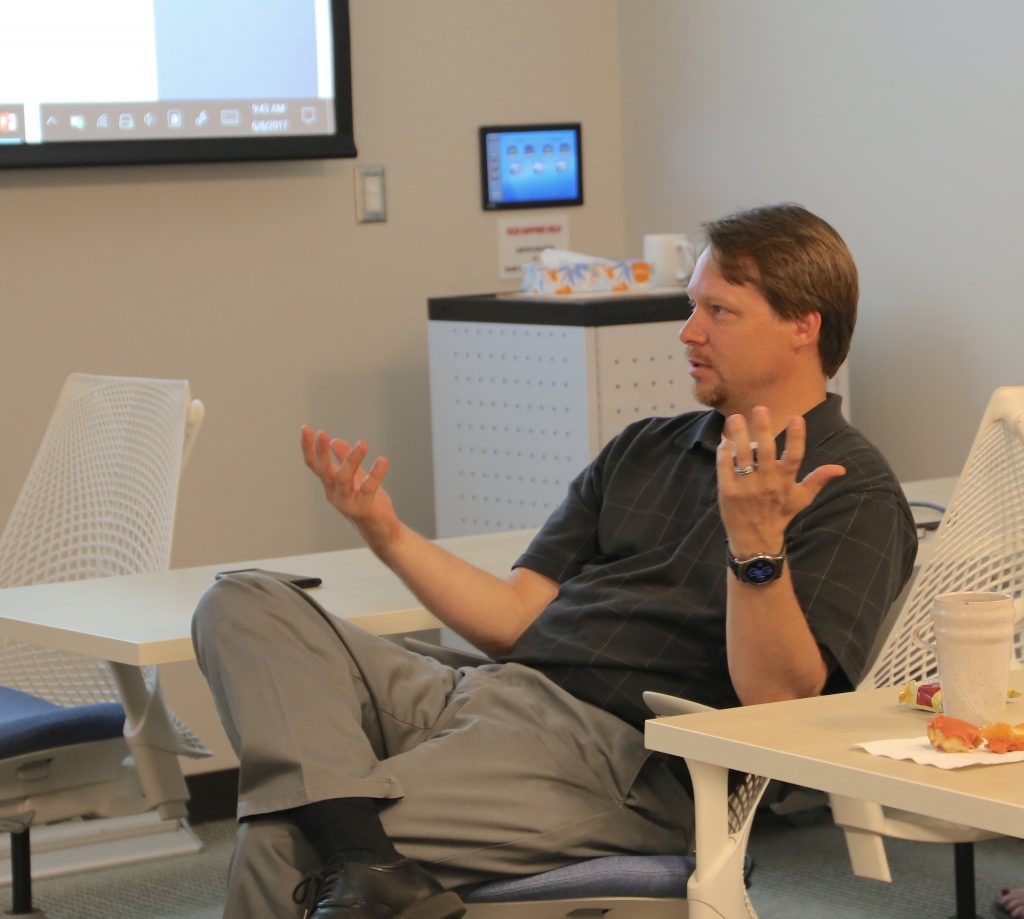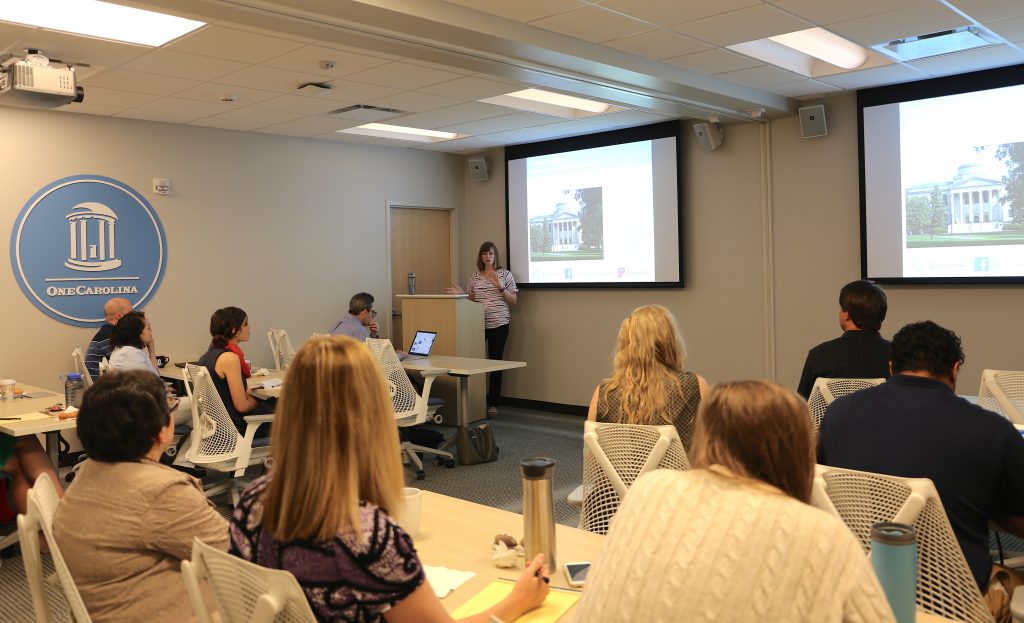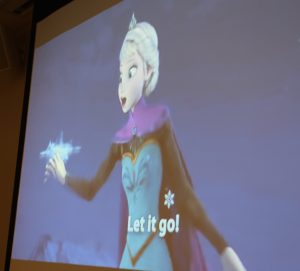Workers and workplaces are really good at creating lots of files and folders, but most organizations provide little–if any–training or guidance on how to keep all those digital and paper files from amassing into an unwieldy problem.
Sure, the cost of storage has decreased somewhat, but all that digital content is still expensive to manage and back up. Also, needlessly and neglectfully holding onto files containing sensitive information that could be lost or stolen — especially unmitigated sensitive information — adds to an organization’s exposure.
ClutterBusters is University Development’s solution

Enter ClutterBusters. Since 2009, the UNC-Chapel Hill Office of University Development has methodically and earnestly managed files through its ClutterBusters best-practice approach to electronic and paper files management. University Development’s program requires time, commitment and a good sense of humor, but ClutterBusters stands out as an enterprising model that other Carolina groups could emulate for their benefit.
“It makes sense from a financial perspective,” said Mark Ingram, Infrastructure & Technology Manager at University Development and the ClutterBusters File Management Committee Chairman.
Large committee meets bi-monthly

At the heart of ClutterBusters is its committee of about 25 members, with representatives from each of the 18 groups within University Development. The committee meets bi-monthly. Representatives are responsible for the file management in their area and communicating to their group items of interest from the meetings. Reps also are responsible for knowing and training their area users about ClutterBusters file-management guidelines.
Based upon ClutterBusters best practices, University Development 160 or so employees are encouraged to avoid keeping files on the local storage on their computer. Instead, they’re encouraged to store files on their individual G Drive space on the server, in the I Drive groups space or in University Development office-wide shared H Drive. Sensitive information is stored in Information Technology Services’ Secure Network-Attached Storage (SecNAS).
Create folder description files
In addition, University Development employees are asked to create folder description files and name them starting with a pound sign, a naming convention that keeps the file at the top of the list. The files include the date the folder was created, who created it, the group name, the purpose of the folder and keywords. These files are very useful, particularly given that University Development is always experiencing changeover in positions. The files enable the next person who is hired into the position to have an idea of what’s in the folder and if it needs to be kept or culled.
Tool checks for duplicate files

The ClutterBusters team uses a tool that checks the drives for duplicate files bit by bit — not simply by file name. When a group has duplicate files, that ClutterBusters group representative communicates with the user to determine if there’s a legitimate need for the copy.
Individual groups hold “microburst” meetings lasting half an hour to an hour at which team members collectively review files and any new issues with files.
At the full ClutterBusters committee meetings, members review who was hired since the last meeting and ensure that those new hires have been introduced to file management best practices, including preferred file-naming conventions. Committee members also discuss:
- New technology that affects file management, such as OneDrive, which University Development will gain in July upon migrating to Office 365
- Information security related to file management, including running Identity Finder (Project SIR) and moving to SecNAS any documents containing Social Security numbers or credit card information, for example, that cannot be deleted
- Findings from recent group micro bursts
- Reminders that any external data sharing requires non-disclosure documentation
- University rules for record retention and disposition
- Reports on file storage space
Snacks and funny videos boost engagement

Yes, talking about file management can be dry, Ingram acknowledged. “It’s hard to put together an agenda that doesn’t put people to sleep. It’s hard to keep it fresh and interesting for people.”
Meetings need a special approach. “It’s got to be light-hearted,” he said. “You’ve got to have snacks — at every one of the meetings.”
Ingram, for instance, might tell committee members to expect ice cream at the next meeting, to help entice attendance. Ice cream fits with ClutterBusters’ theme song of “Let It Go” from the “Frozen” Disney movie. The committee begins each meeting by playing the song and reviewing ClutterBusters’ mission and goals.

What else helps inject some fun into the meetings? Occasionally showing funny YouTube videos related to file management.
When ClutterBusters first launched, University Development “found stuff back from the ‘80s,” Ingram said. Committee members also have shed photos from long-ago office events and music files that users had inadvertently saved to iTunes. Thanks to ClutterBusters, University Development also had much less paper clutter to move when the main office temporarily relocated during a building renovation.
